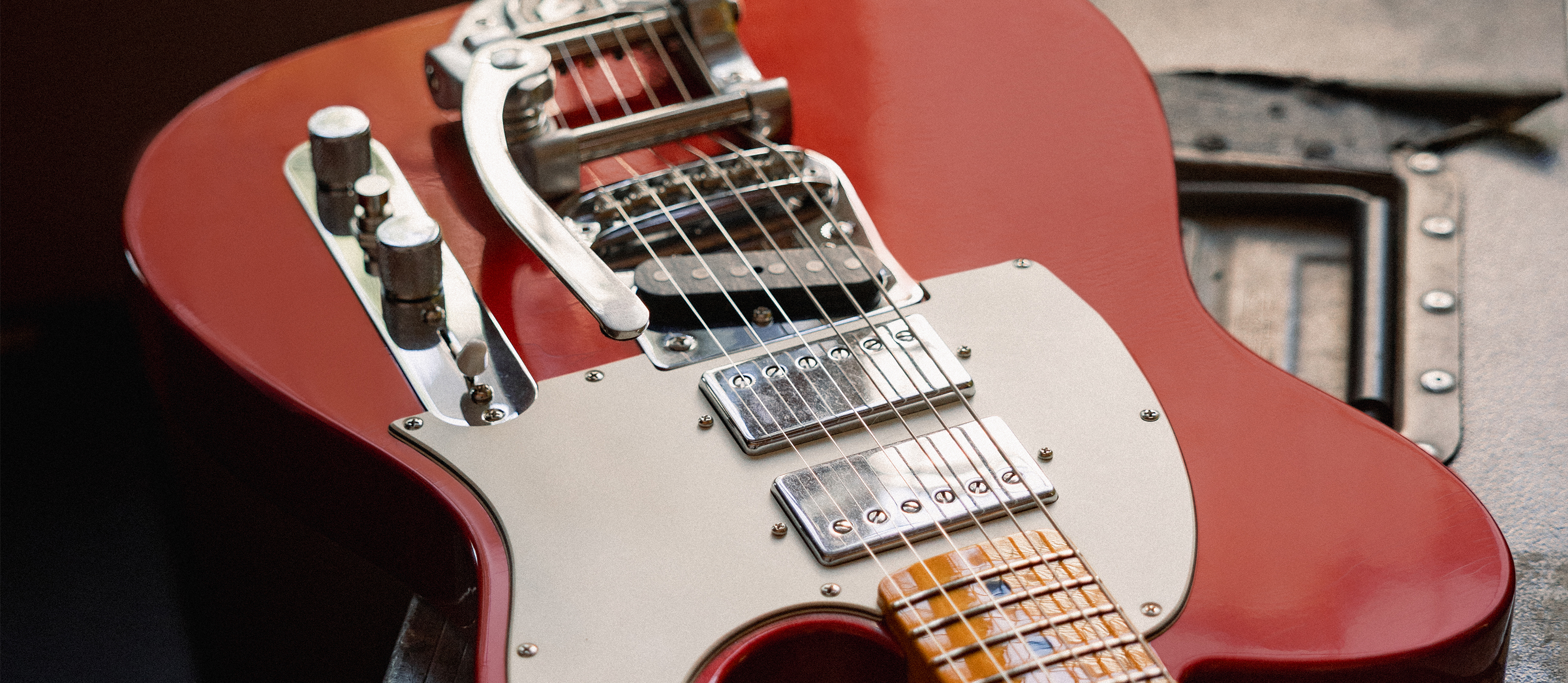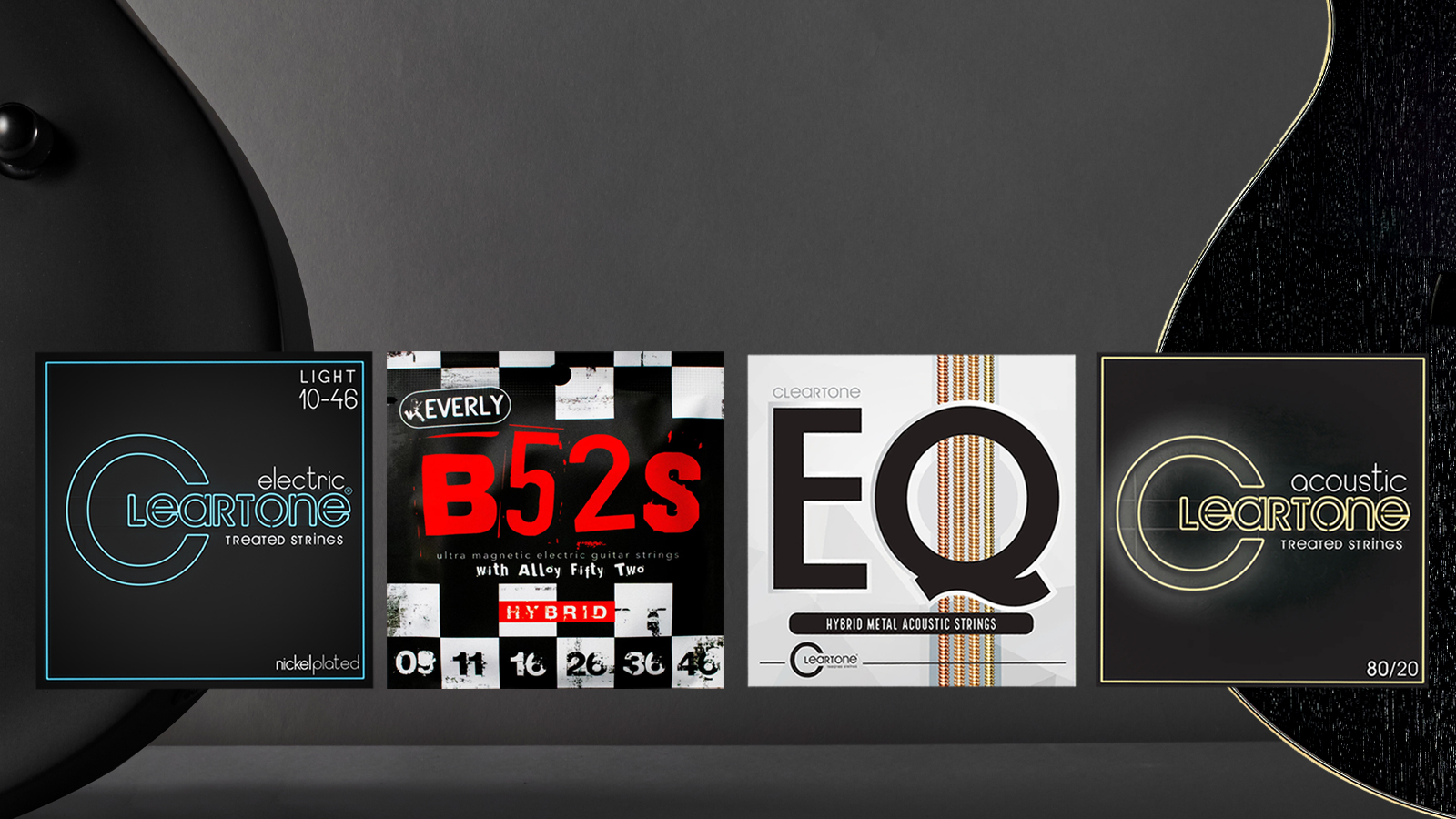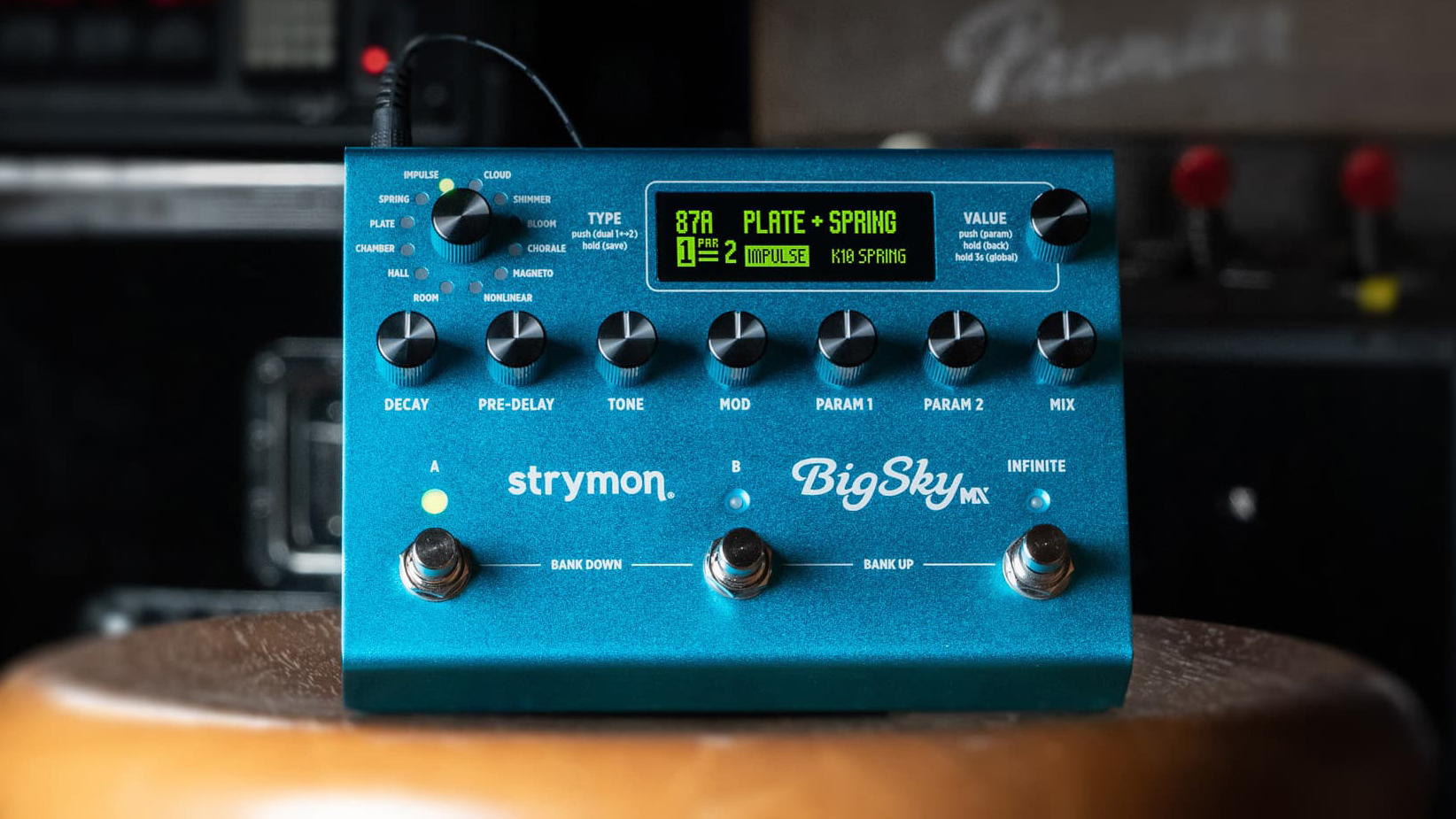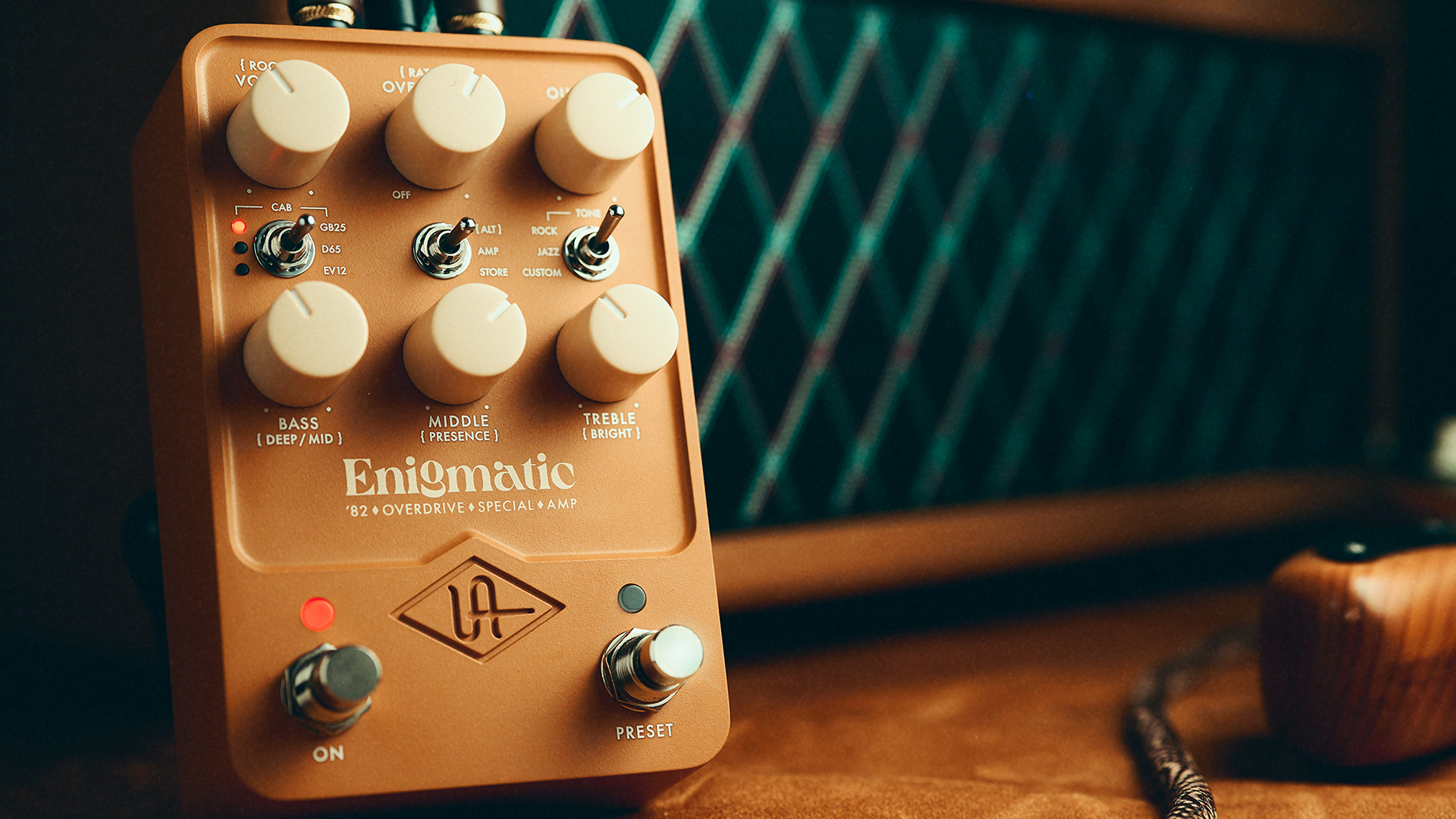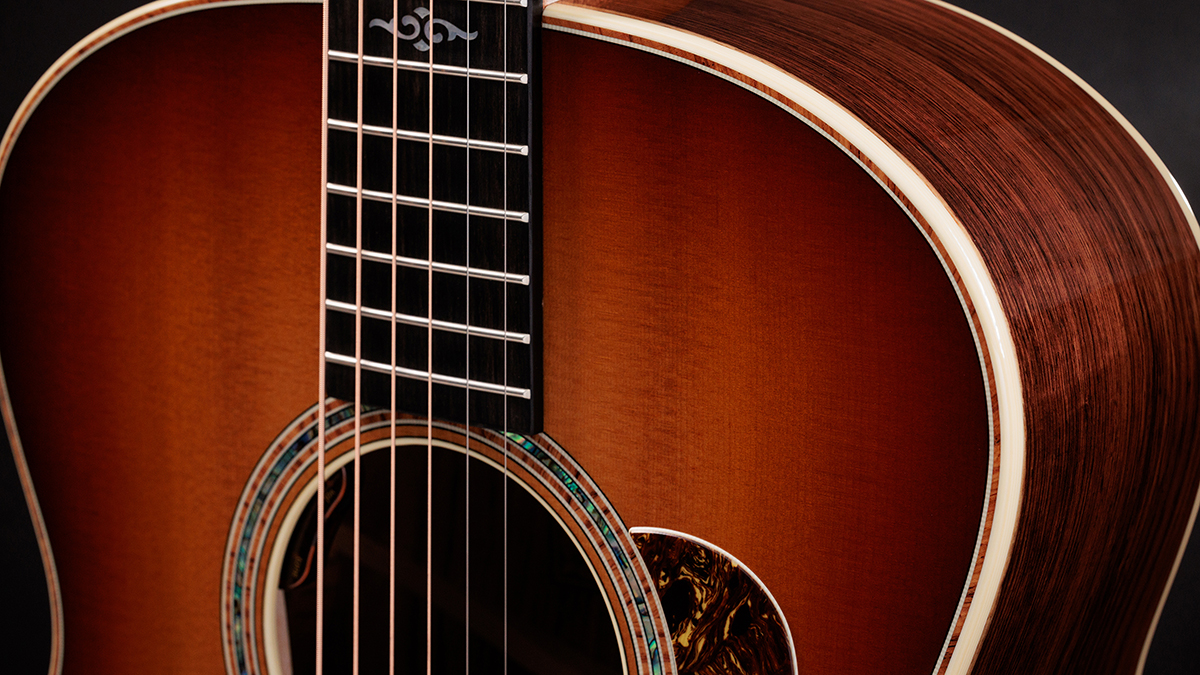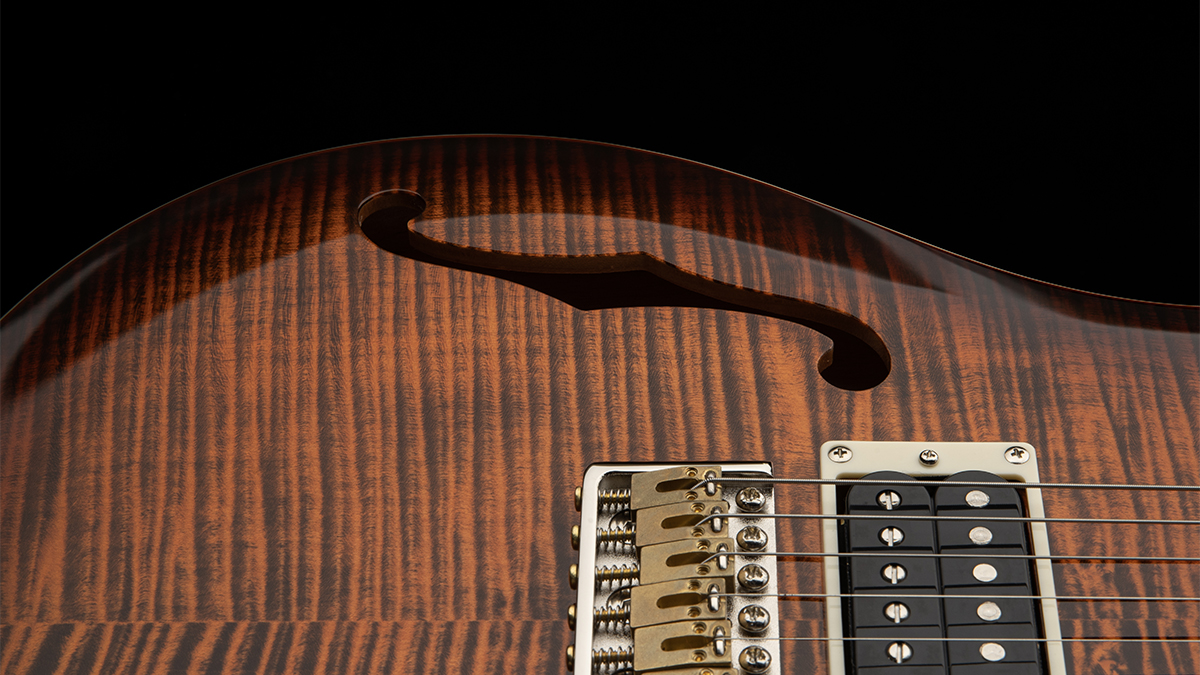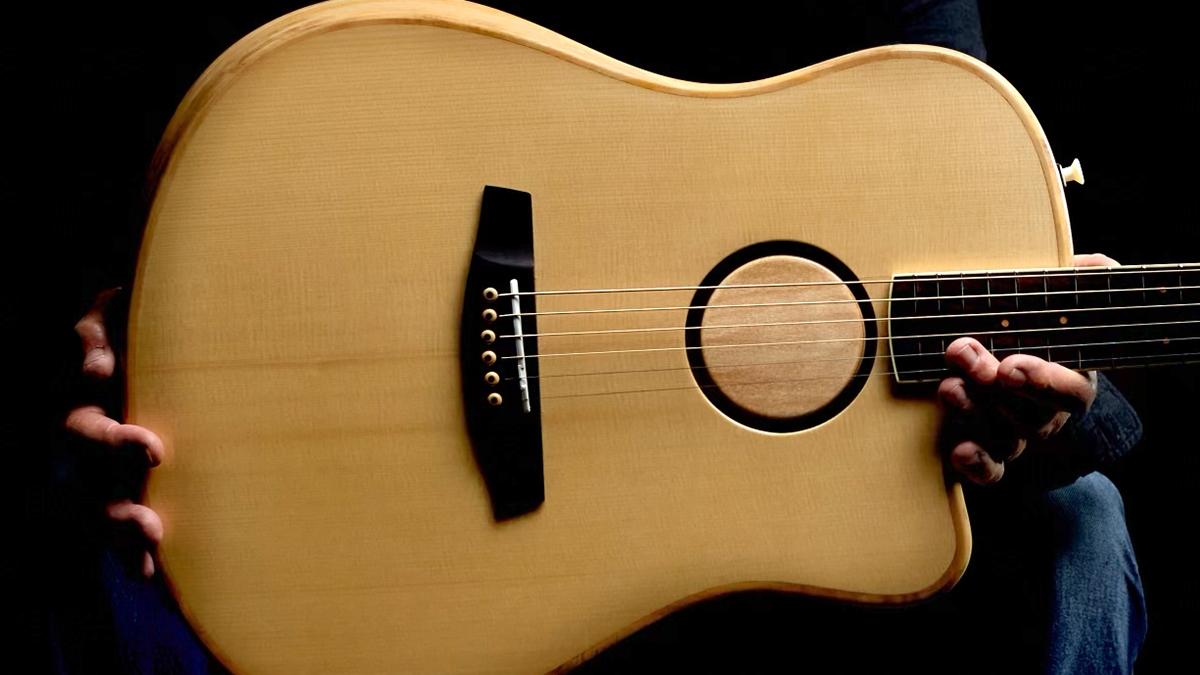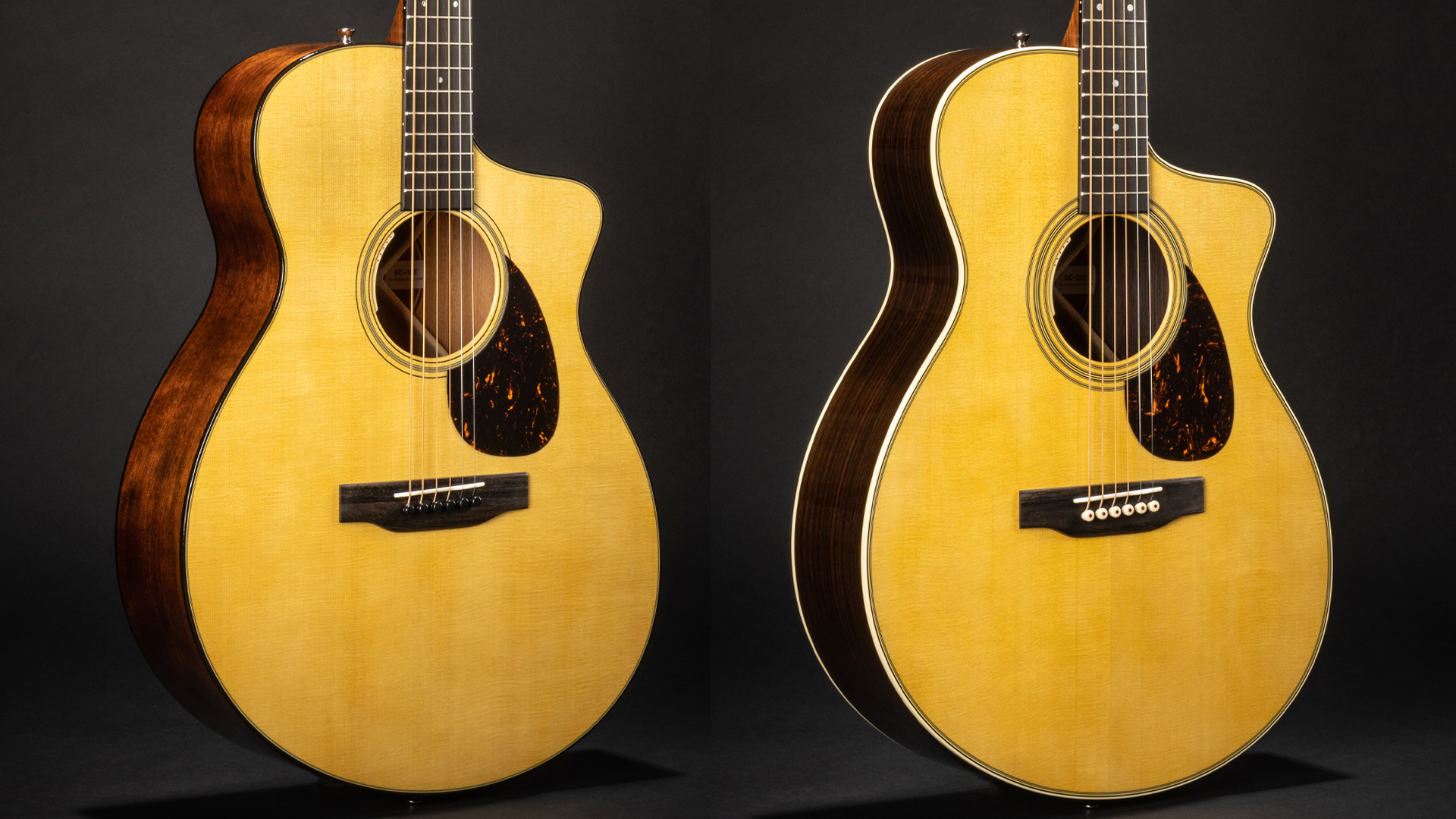GuitarPlayer Verdict
A faithful tribute to an unusually modified guitar, the Fender Stories Collection Mike Campbell “Red Dog” Telecaster brings a new and powerful flavor to the familiar potent sounds of a Fender staple. Players of rock, blues, punk and high-powered country will appreciate the extra dose of power it gets from its humbuckers and preamp boost "Destruct" circuit. Plus the lightly checked finish looks awesome.
Pros
- +
A powerful and versatile modded-Tele in its own right
Cons
- -
A little heavy overall
- -
Slight dip in output when switching off the boost
You can trust Guitar Player.
Guitarist, songwriter and producer Mike Campbell is known to have used several classic guitars throughout his career, but one of the best-recognized is the mutt that helped propel one his biggest early hits with Tom Petty and the Heartbreakers. To that end, the new Fender Stories Collection Mike Campbell “Red Dog” Telecaster faithfully recreates the heavily modified 1972 Tele Campbell acquired second-hand early in his career, which was quickly made legendary on the recording and video for the Heartbreakers’ 1979 hit “Refugee,” and slotted into his arsenal for regular rotation thereafter.
As befits Fender’s ongoing Stories Collection — which captures notable artist guitars with compelling backstories — the tale of the Red Dog Telecaster began when a former guitar student in Florida offered Campbell his 1972 Telecaster for sale. When he laid the instrument in his tutor’s hands, though, it was clearly a Tele that had already undergone extensive modification.
In addition to the added Bigsby and traditional single-coil bridge pickup, the guitar had full-size humbuckers in the neck and middle positions, and an added boost circuit activated by a push-button switch on the control plate, which became known as the “Destruct" circuit. Sold!
Appropriately, the chassis of the Red Dog Telecaster replicates the period-correct features of a ’72 Tele with Custom Color finish. It’s finished in Red Dog Red, a color that’s a cousin of Candy Apple Red. Woods include a body of solid alder and a one-piece maple neck with two string trees, ’70s-era “F” tuners, and the bold black logo of the period.
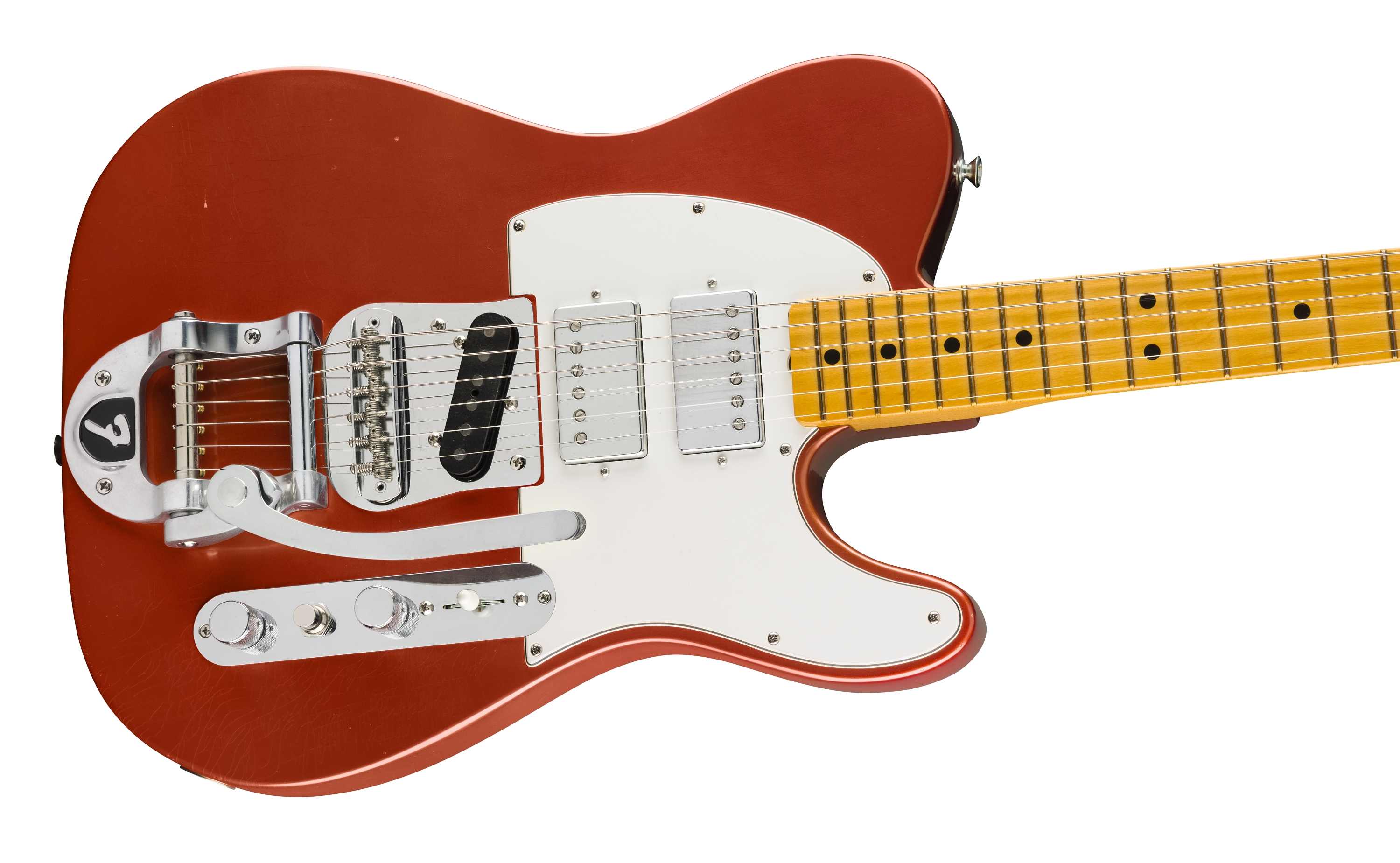
Having played so many of Fender’s recreations of pre-CBS Telecasters, I think it’s fun to see the effort that has gone into this one from a less-lauded time. The original Red Dog was clearly a fine guitar to grab Campbell’s attention in the first place, but the general decline of manufacturing quality through that decade makes many ’70s examples rather hit-or-miss. Given the fit and finish of this Stories Collection guitar, which are impressive at first assessment, it might be a better-made instrument than many originals of the day.
The medium-C neck carve feels accurate to the period, and the 7.25-inch fingerboard radius and 21 vintage-narrow frets round out the impression of authenticity in the feel. Overall, it’s a fast and easy player, with smoothly dressed frets and an appealing shape in the hand. And if more extreme string bending requires the occasional workaround on this tight vintage-correct radius, well, plenty of great players managed to live with it over the years, including Campbell himself.
It’s worth noting that the Fender Custom Shop offers a Limited Edition Masterbuilt version of the Red Dog that replicates the build and play wear of the original in even more painstaking detail, but this Stories Collection example boasts light checking and wear in the finish and hardware to give it the patina of age—something Fender calls its Heirloom nitrocellulose finish—and I feel it looks great as such.
The effort even goes as far as leaving out the low-E-string ferrule on the back of the body, long missing from Campbell’s Red Dog (the ferrules themselves are evidence that the original began life as a standard Telecaster, rather than a factory Bigsby model).
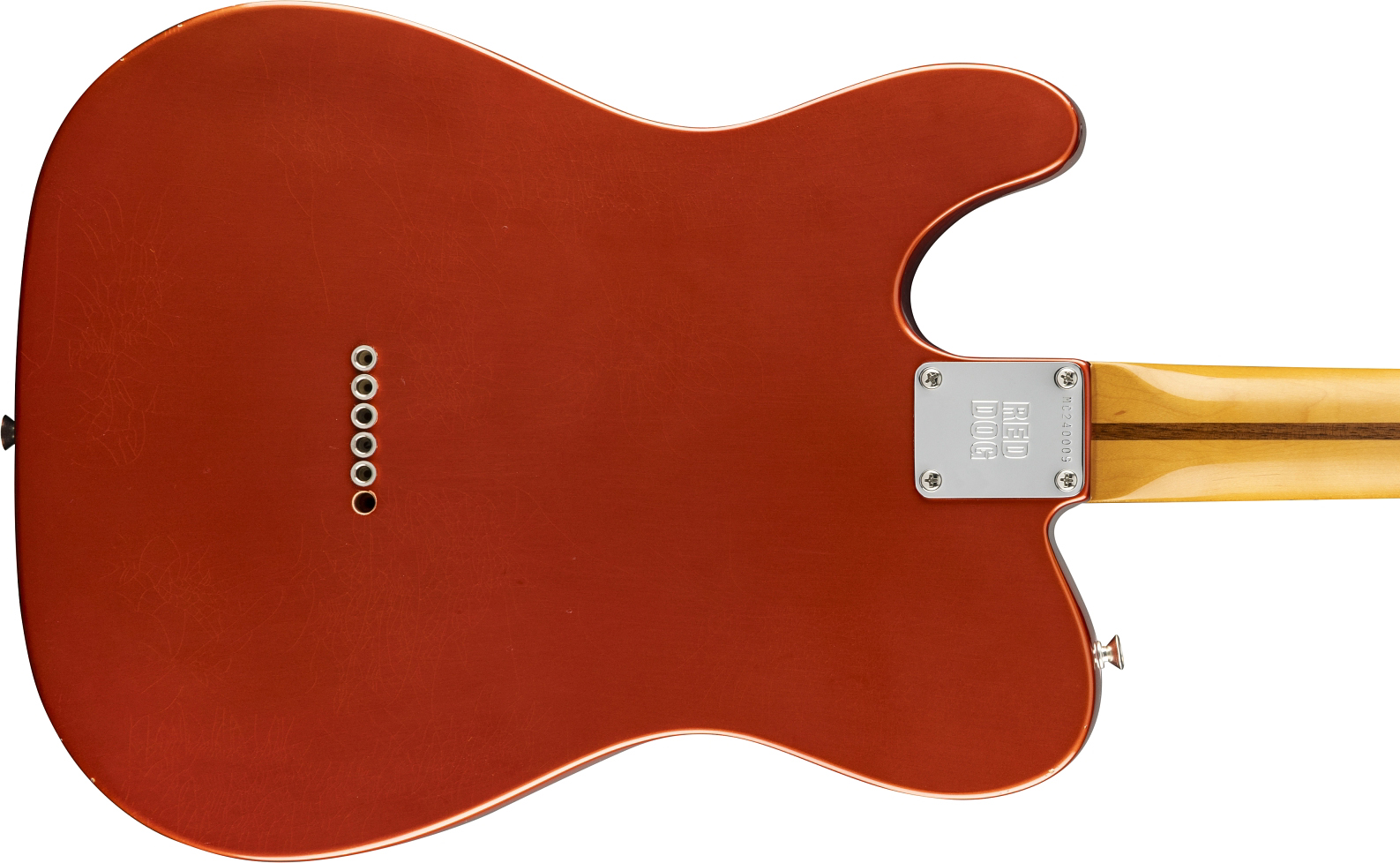
If there are any detracting points, I’d say the full guitar comes in a little heavy at just shy of nine pounds, but with the Bigsby tailpiece and pair of humbuckers being part of that, it tells us the basic chassis sits within a reasonable weight range for a ’70s Telecaster.
All three pickups are custom-designed for the guitar and carry a Mike Campbell Red Dog designation, including the traditional Telecaster single-coil in the bridge and the PAF-style humbuckers in the middle and neck positions. These reveal DC resistance readings of 10.24k ohms, 7.50k ohms and 7.15k ohms, respectively, indicating the bridge pickup is likely a Broadcaster-style wind.
They are wired through a five-way switch that gives the usual individual and combined selections, plus master volume and tone controls and the aforementioned push-push boost switch, which is essentially a pedal-style stomp switch.
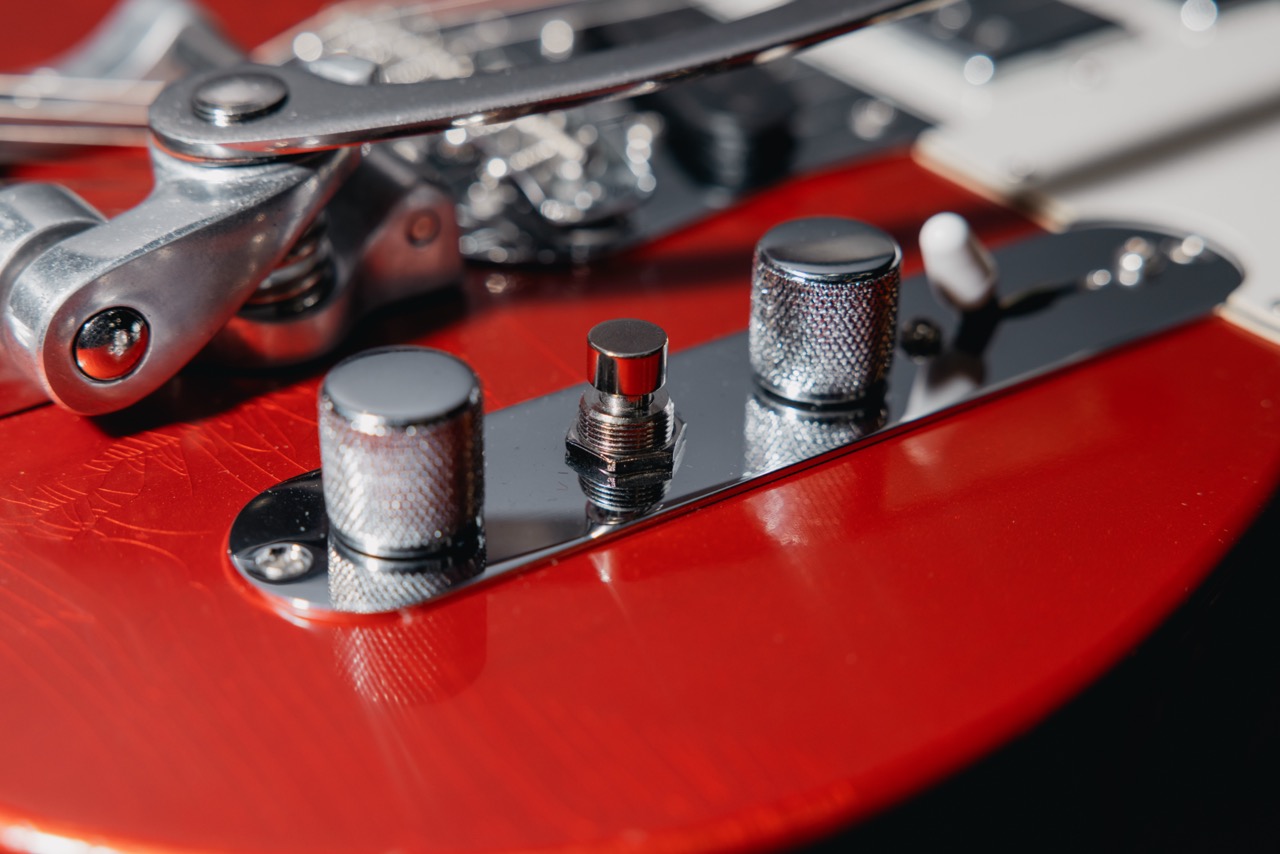
The boost circuit and its requisite nine-volt battery are stored under the control plate within the cavity, which makes it a tight squeeze in that narrow space, but it all fits well enough. The circuit board carries two micro-potentiometers for adjustment of the boot’s gain and level, which are set to the ideal at the factory.
The Bigsby is a B5F, the “horseshoe” unit designated for Fender use, with the same rocker bridge used on Jazzmasters and Jaguars, mounted in a plate designed for converting standard Telecasters to Bigsby use. Fender “F” tuners with slotted posts, a chromed control plate with chromed/knurled knobs, aluminum strap buttons, and a three-ply white pickguard complete the package.
Tested through a tweed Deluxe-style 1x12 combo, a Vox-ish 65amps London head and 2x12 cab and a Fractal FM9 into headphones, the Red Dog Telecaster quickly revealed the power and versatility that clearly appealed to Mike Campbell in the first place.
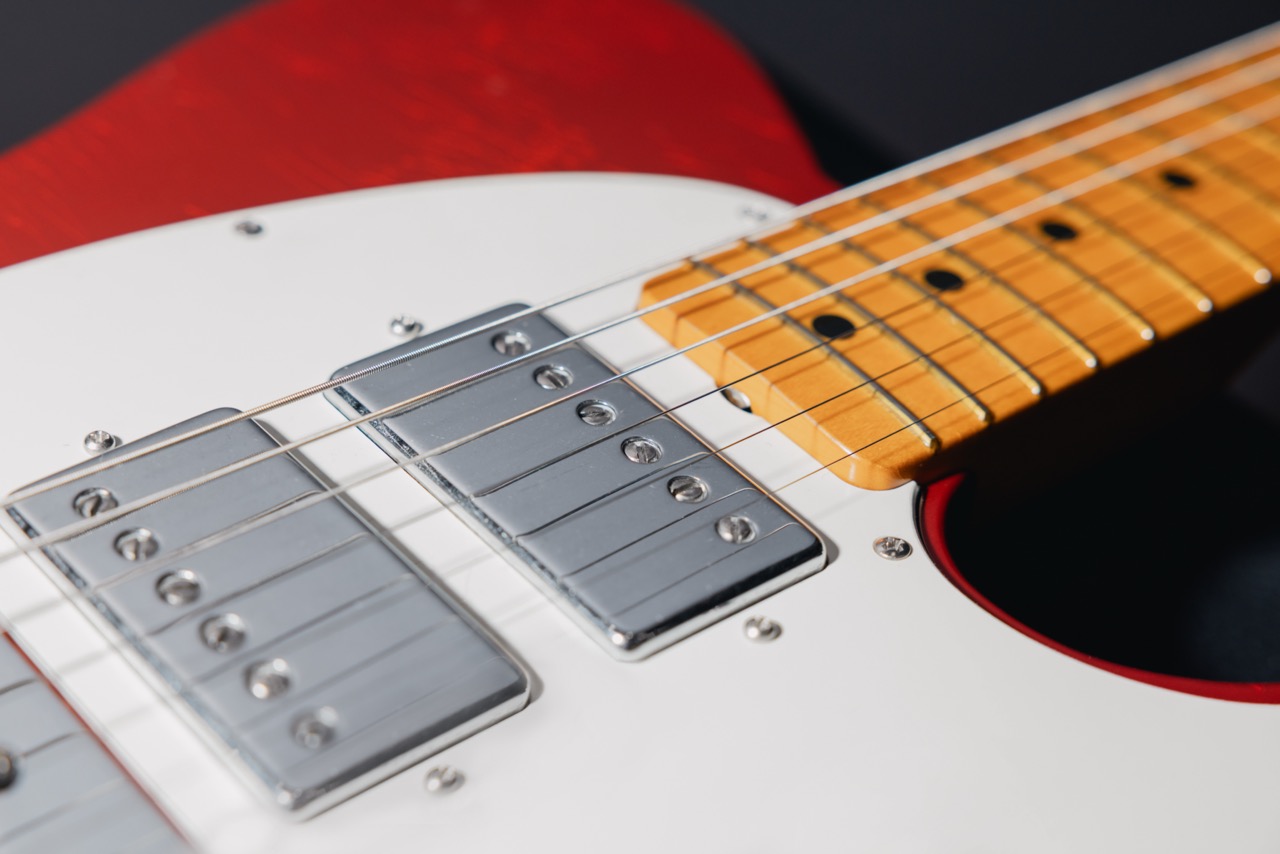
On the bridge pickup, the guitar delivers pure traditional Tele twang and makes a great option for spikier leads and meaty single-note wound-string riffs alike. It’s still one of the greatest bridge-position tones in the electric guitar world, so whichever Dr. Frankenstein modded the Red Dog in the first place, they were wise to leave out the humbucker there.
As might be expected, the middle and neck positions usher in more power and warmth, while retaining plenty of clarity. As many other modders discovered over the years, adding a humbucker to a Telecaster’s rhythm position alleviates once and for all the underwhelming neck-pickup tone that so many such guitars experienced previously, and this is no exception.
It wouldn’t be quite right to say it’s “Gibsony,” considering the Fender-specific nuances that the alder body, maple neck, and 25.5-inch scale length bring to the table, but it gets you in that ballpark and proves great for singing rock and blues leads in particular.

Fun and a little surprising are the in-between positions, which aren’t quite as thin and quacky the in-between Strat tones implied by the two and four positions on a five-way switch, but are fuller and rounder, though still funky and scooped, and seem primed for more atmospheric effects-laden playing or softer balladry.
On top of it all the boost function is a fun bonus. Leaning toward a vintage fuzz, it’s thick and woolly without being overly dark, and cleans up well from the guitar’s volume control, too. There’s a slight dip and ramping-back-up of the guitar’s output when you switch it off again—presumably as the active circuit hands things back over to the passive signal chain—but I guess it’s something you’d get used to. And having played with adjusting the micro-pots for gain and level, I happily returned to the factory settings, which seem “just right” for this fuzzy preamp.
Finally, the Bigsby functions smoothly and excels at the evocative wobbles for which these things are famous. It has decent return-to-pitch after use provided you’re not too vigorous with your vibrato action, but some retuning will be inevitable between heavy handed songs. All in all, it's a powerful, versatile variation on the timeless Telecaster, and one with a vital back story to boot.
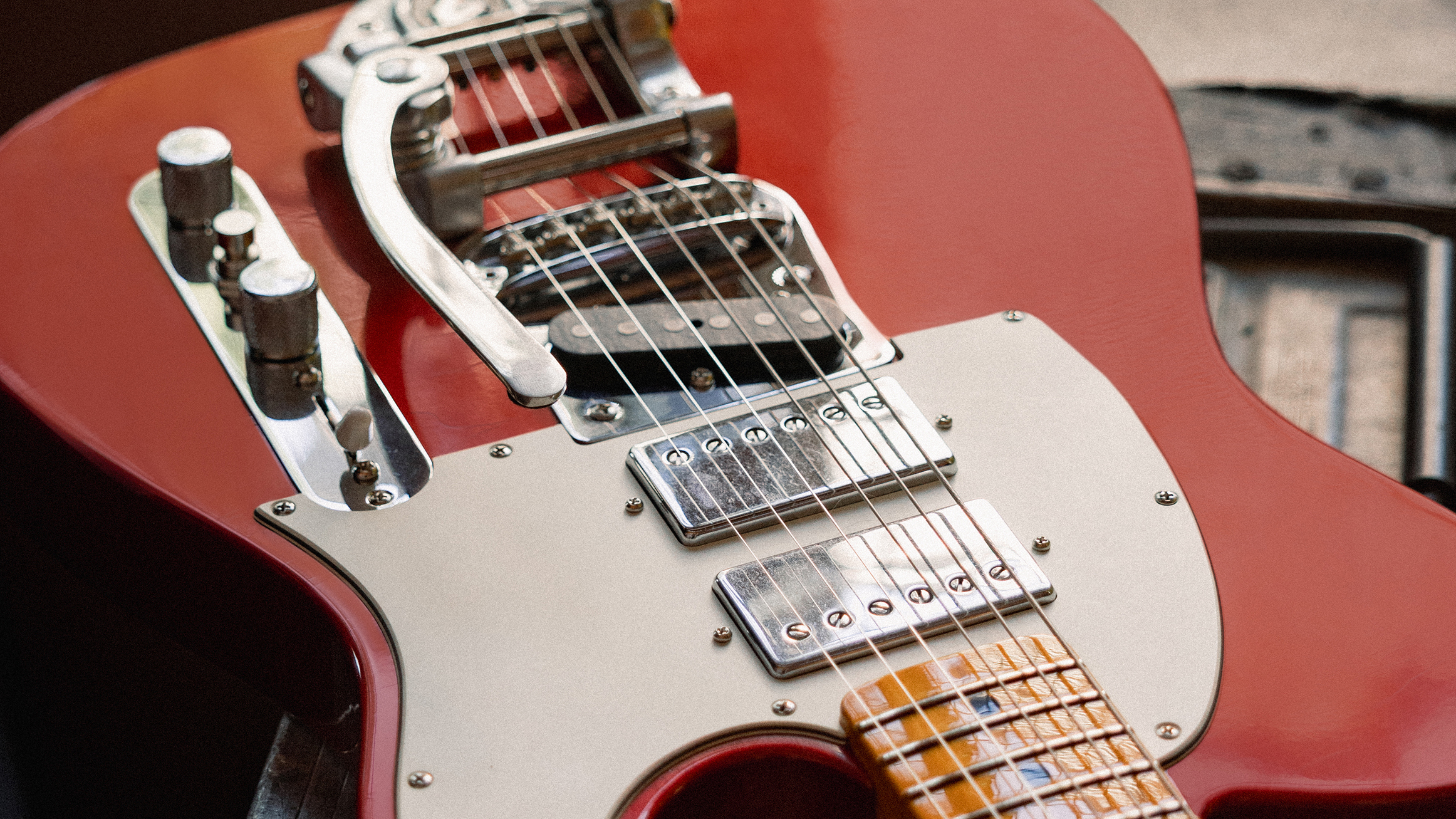

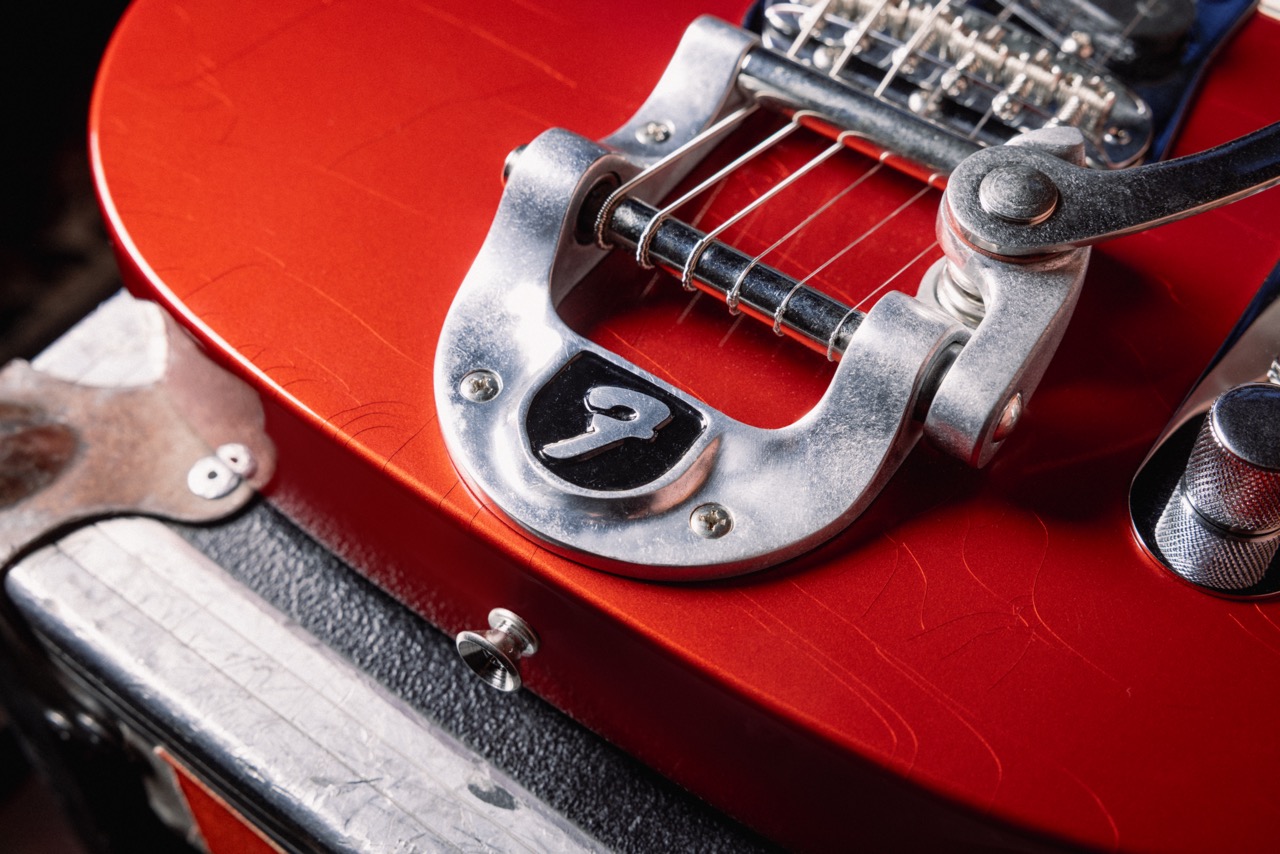
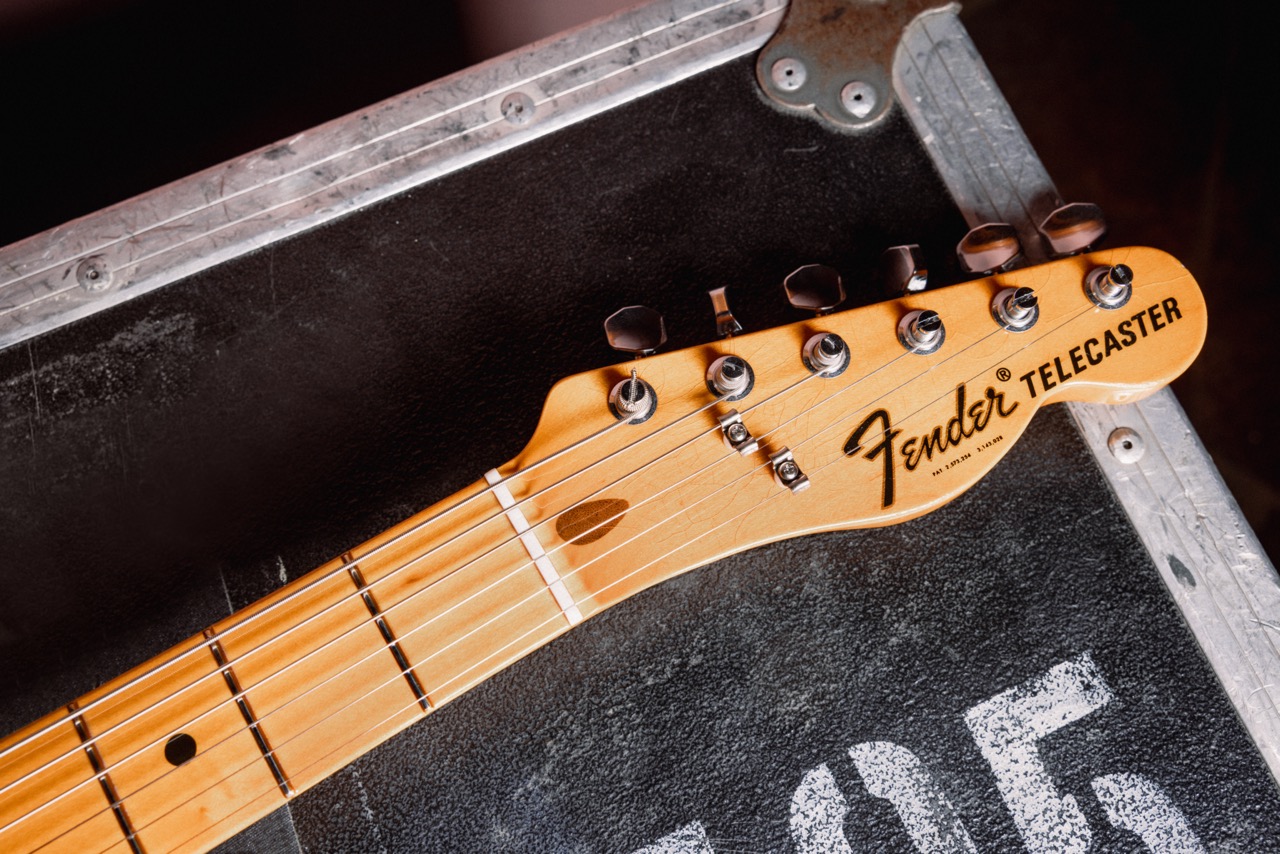
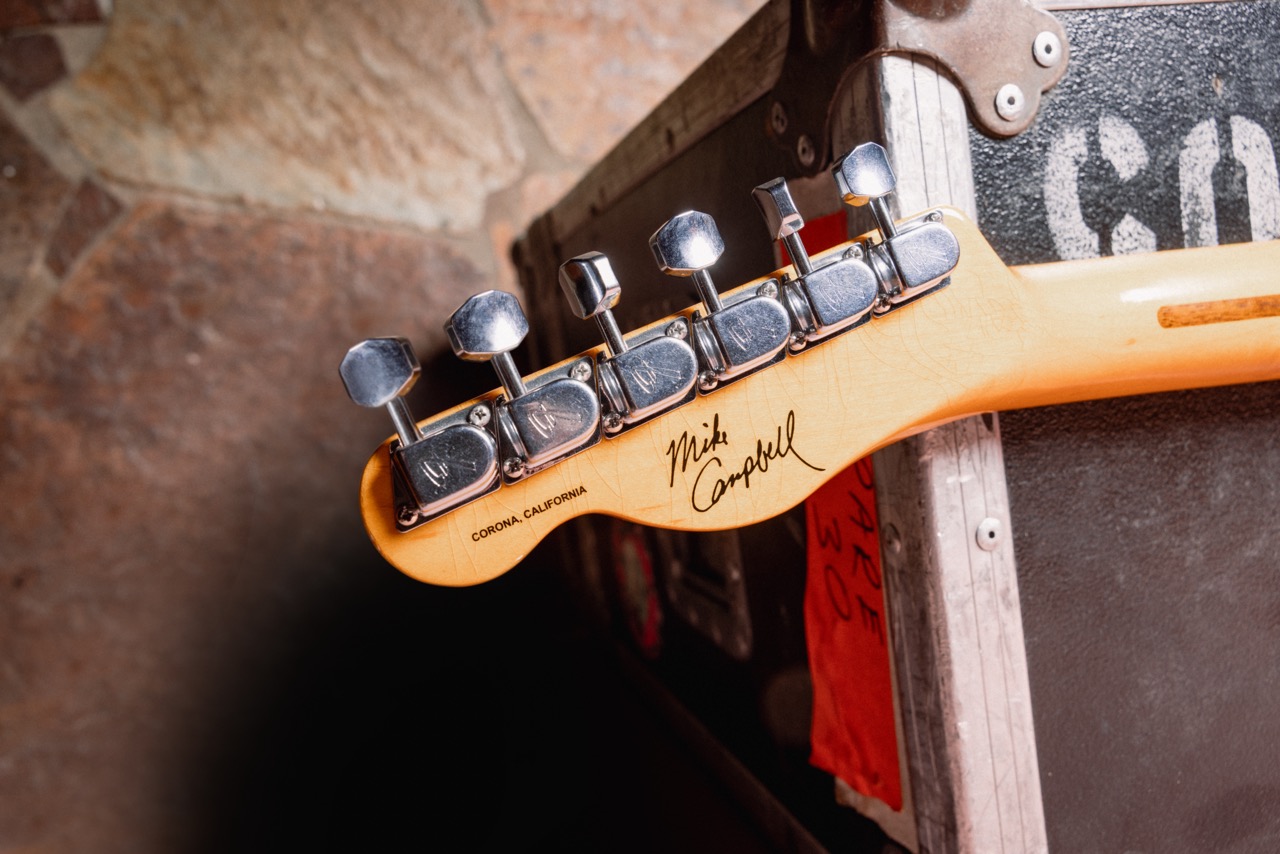
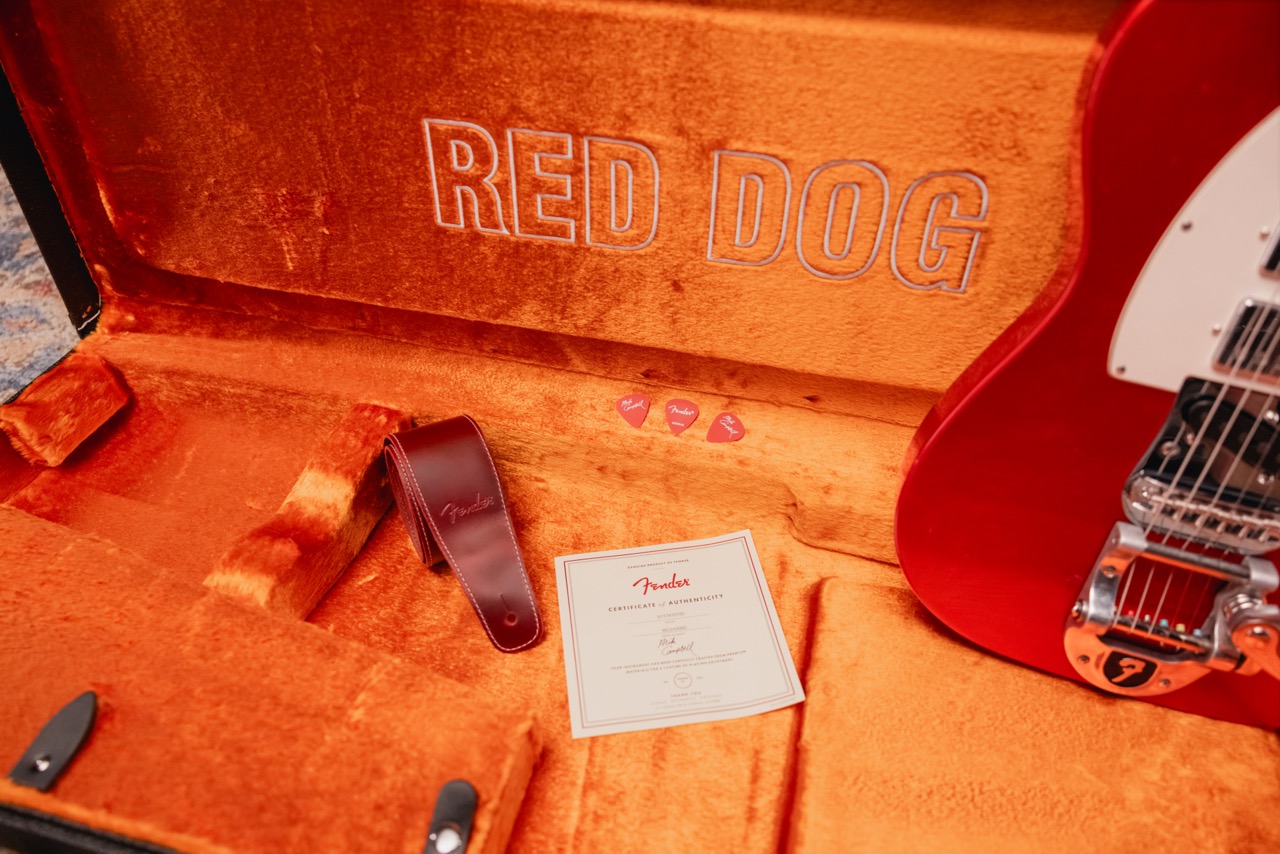
SPECIFICATIONS
CONTACT Fender.com
PRICE $3,499 street
NUT Bone, 1.60" wide
NECK Maple, 25.5" scale length, medium “C” profile
FRETBOARD Maple, 7.25" radius
FRETS 21 vintage-gauge
TUNERS Fender “F” key
BODY Solid alder
BRIDGE Rocking offset-style bridge and Bigsby “F” vibrato
PICKUP Three Fender Red Dog pickups: a Tele single coil in the bridge position and vintage-style humbuckers in the middle and neck
CONTROLS Volume and tone controls, five-way switch, push-push boost switch
FACTORY STRINGS Fender USA 250LR Nickel Plated Steel .009–.046
WEIGHT 8.8 lbs
BUILT USA
KUDOS A fun tribute to Mike Campbell’s “Refugee” guitar, the Red Dog is a powerful and versatile modded-Tele in its own right.
CONCERNS The guitar’s a little heavy overall, and there’s a slight dip in output when switching off the boost.
Dave Hunter is a writer and consulting editor for Guitar Player magazine. His prolific output as author includes Fender 75 Years, The Guitar Amp Handbook, The British Amp Invasion, Ultimate Star Guitars, Guitar Effects Pedals, The Guitar Pickup Handbook, The Fender Telecaster and several other titles. Hunter is a former editor of The Guitar Magazine (UK), and a contributor to Vintage Guitar, Premier Guitar, The Connoisseur and other publications. A contributing essayist to the United States Library of Congress National Recording Preservation Board’s Permanent Archive, he lives in Kittery, ME, with his wife and their two children and fronts the bands A Different Engine and The Stereo Field.
"We tried every guitar for weeks, and nothing would fit. And then, one day, we pulled this out." Mike Campbell on his "Red Dog" Telecaster, the guitar behind Tom Petty & the Heartbreakers' "Refugee" and the focus of two new Fender tribute models
“A good example of how, as artists, you have to blindly move forward with crazy ideas”: The story of Joe Satriani’s showstopping Crystal Planet Ibanez JS prototype – which has just sold for $10,000
